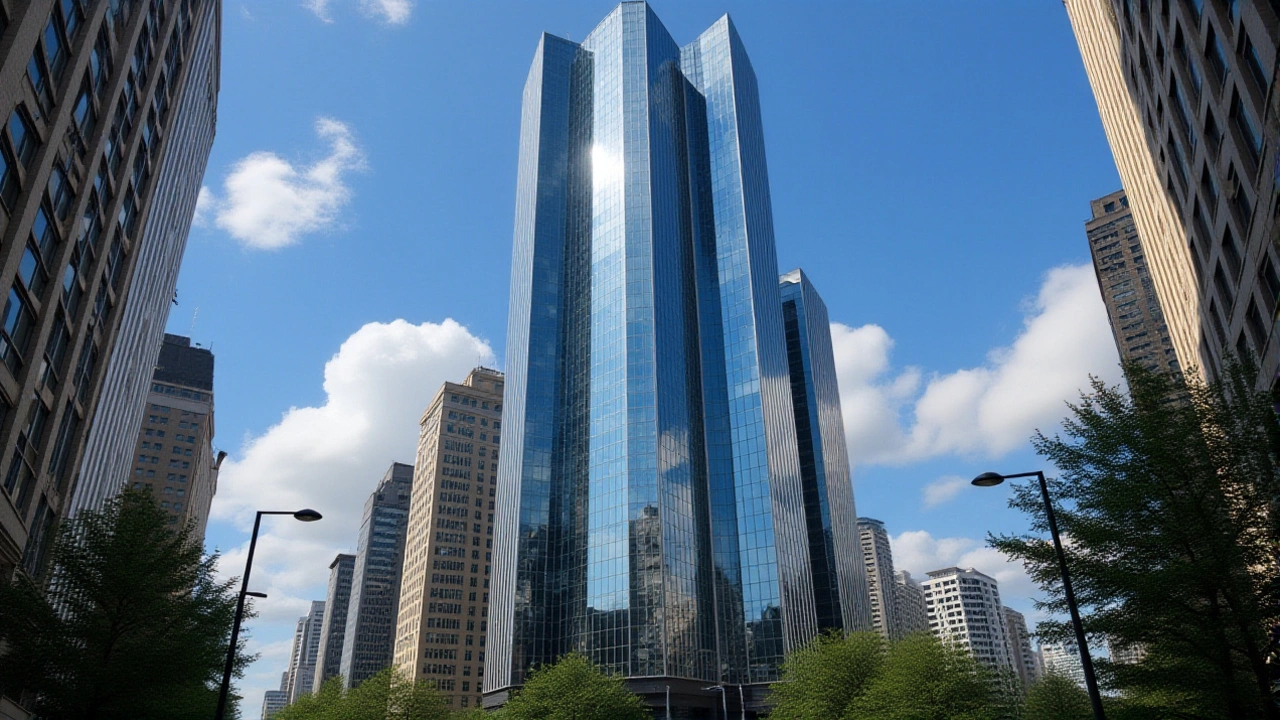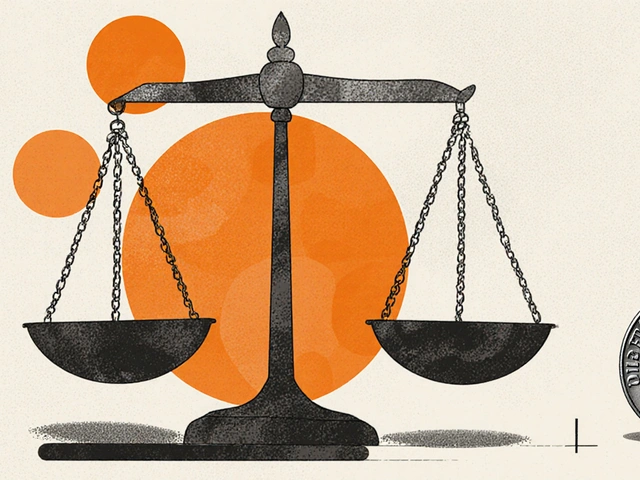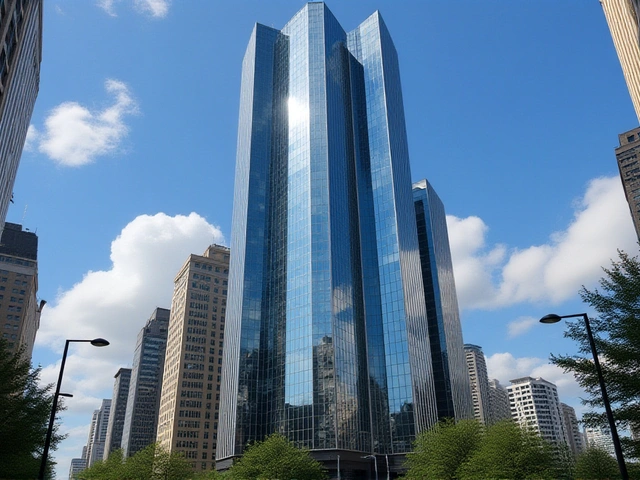When the Federal Reserve signaled in September 2025 that it planned two more rate cuts before year’s end, Wall Street cheered. President Donald John Trump even tweeted about it. But now, as December approaches, the Federal Open Market Committee is deeply split — and that December cut may not happen at all. The twist? It’s not inflation alone causing the hesitation. It’s the quiet, growing fear that the economy might be teetering between too hot and too cold — and no one’s sure which way to steer.
October’s Cut Wasn’t as Consensus as It Looked
The Federal Reserve did cut rates on October 29, 2025 — by exactly 0.25 percentage point, bringing the federal funds rate to a target range of 3.75% to 4.00%. The announcement came at precisely 2:00 p.m. EDT from the Washington, D.C. headquarters. On paper, it was unanimous. But behind the scenes? It wasn’t. Two governors, Stephen I. Miran and Jeffrey R. Schmid, broke ranks. Miran wanted a 0.50 point cut. Schmid didn’t want any cut at all. That’s not just dissent — it’s a warning flare.
Those votes weren’t anomalies. They reflected a shift in tone. Since the September cut — the first of 2025 — Fed officials have been speaking more cautiously. In speeches across New York, Chicago, and Boston, regional bank presidents began emphasizing that inflation, though off its 2022 peak, had "moved up since earlier in the year." Job gains? Slowing. Unemployment? Barely above 4%, but creeping higher. The economy isn’t collapsing. But it’s not humming either. And that’s the problem.
Trump’s Pressure vs. Fed Independence
President Donald John Trump has been loud. He’s called for lower rates to "supercharge growth," citing his 2017 tax cuts as proof that cheap money works. He’s even floated the idea of replacing Fed leadership if they don’t cooperate. But here’s the thing: the Fed is supposed to be independent. And this time, it’s acting like it.
It’s not defiance for defiance’s sake. It’s caution. After the 2022-2023 rate hikes, the Fed watched inflation stubbornly cling to 3.1% in August — well above its 2% target. Now, with consumer spending softening and housing starts dipping, officials are afraid cutting too soon could reignite price pressures. "We’re not just fighting inflation anymore," one anonymous senior official told Politico. "We’re trying not to break something that’s barely holding together."
The Data That’s Holding Back the Cut
The Federal Open Market Committee doesn’t vote on gut feelings. It votes on data. And the data is messy.
- Inflation, as measured by the PCE index, rose 0.3% in September — the biggest monthly jump since April.
- Job openings fell to 7.1 million in October, down from 7.9 million in July.
- The unemployment rate ticked up to 4.1% in September, from 3.9% in June — still low, but moving in the wrong direction.
- Consumer sentiment, per the University of Michigan, dropped to 68.4 in November — its lowest since January 2024.
That’s not a recession. But it’s not a boom, either. It’s a stall. And for a central bank trained to act preemptively, that’s the most dangerous kind of economy to navigate.
What Happens If No Cut in December?
If the Fed holds steady in December, markets will react. Bond yields will climb. Mortgage rates — already near 6.8% — could creep higher. Small businesses that borrowed expecting lower rates may delay expansions. Homebuyers already priced out will be pushed further out. And for Donald John Trump, it’s a political headache: voters who expected "Trump-era prosperity" may feel let down.
But here’s the counterargument: if the Fed cuts anyway, and inflation surges again next spring, it could trigger a second wave of rate hikes — the kind that actually *does* cause a recession. That’s why Jeffrey R. Schmid and others are holding firm. They’d rather risk a slow-growth winter than a fiery spring.
The Next Move: December 17, 2025
The Federal Open Market Committee meets again on December 17, 2025. No press conference is scheduled unless a decision is made. But the signals are already out: Jerome Hayden Powell, the Fed Chair, has stopped using the phrase "patience is a virtue" — a phrase he used to signal a pause. Now he says, "We will carefully assess incoming data."
That’s code for: "We’re not deciding yet."
And that’s why this isn’t just about rates. It’s about whether the Fed still believes it can fine-tune the economy — or if the era of predictable policy is over.
Background: The Fed’s 2025 Rate Cut Path
Back in January 2025, markets expected the Fed to hold rates steady until mid-year. Then, by March, inflation started cooling. By June, economists were forecasting one cut in 2025. By August, that became two. September’s surprise 0.25-point cut confirmed it. October’s cut was supposed to be the second of three.
But then came the October CPI report — higher than expected. Then the September PCE. Then the labor market softening. And suddenly, the third cut — the one scheduled for December — looked like a gamble.
It’s not the first time the Fed has backtracked. In 2019, it cut rates three times after promising to hold steady. In 2023, it paused for six months after rapid hikes. But this time, the split is more visible. And more public. And that’s what makes it different.
Frequently Asked Questions
Why is the Fed hesitating on a December rate cut when inflation seems to be cooling?
While inflation has eased from its 2022 peak, recent data shows it’s not falling as steadily as hoped — the PCE index rose 0.3% in September, and core services inflation remains stubborn. The Fed fears cutting too soon could reignite price pressures, especially with wage growth still above 3.5%. They’re prioritizing long-term stability over short-term market relief.
Who are the key dissenters on the Fed’s rate decision, and why do they disagree?
Stephen I. Miran wants a 0.50-point cut, arguing that slowing job growth justifies more aggressive easing. Jeffrey R. Schmid opposes any cut, warning that inflation is still above target and labor market weakness could be temporary. Their split reflects a deeper divide between "growth-first" and "inflation-first" camps within the FOMC.
How might a no-cut decision affect everyday Americans?
Borrowing costs would stay high. Mortgage rates may remain above 6.5%, making home purchases harder. Auto loans and credit card APRs won’t drop. Small businesses may delay hiring or expansion. But it could also mean fewer job losses down the line — if the Fed avoids a future forced hike, the economy might avoid a sharper downturn.
Is President Trump able to force the Fed to cut rates?
No. The Federal Reserve is legally independent. While presidents can publicly pressure the Fed — and Trump has done so repeatedly — they cannot fire governors for policy decisions. The Fed’s chair and governors serve 14-year terms, designed precisely to shield monetary policy from political interference, even if the president disagrees.
What’s the historical precedent for this kind of Fed split?
In 2016, the FOMC was split over whether to raise rates amid global uncertainty. In 2019, two governors dissented against rate cuts, fearing inflation risks. But this is unusual: for the first time since 2020, two governors have openly opposed even a modest cut — and their reasoning is rooted in conflicting data interpretations, not ideology. It signals a loss of consensus, not just disagreement.
What should investors watch for before the December meeting?
Watch the November 28 jobs report and the December 1 PCE inflation data. If job gains surprise to the upside or inflation ticks above 0.4% monthly, a December cut becomes unlikely. If both come in softer than expected, markets will price in a 70%+ chance of a cut. The Fed’s own projections, updated in December, will also reveal whether officials now expect only one cut in 2025 — not three.




The Fed’s hesitation isn’t about data-it’s about fear. They’re scared to admit they lost control after 2022’s botched hikes. Now they’re paralyzed, pretending to be ‘data-driven’ while ignoring the real truth: monetary policy is a blunt instrument in a digital economy. We’re not in 2008 anymore. Algorithms don’t care about Fed signals. Retail investors are already moving to crypto, gold, and private credit. The Fed’s relevance is evaporating-and they know it.
They think they’re protecting the economy. They’re just protecting their own legacy. And that’s the most dangerous kind of arrogance.
Let’s be clear: the Fed isn’t divided because the data is messy-it’s divided because they’re still operating on 20th-century models. Inflation isn’t just about prices; it’s about wage expectations, supply chain fragmentation, and AI-driven productivity shifts. They’re measuring the wrong things with outdated tools. A 0.25% cut won’t fix this. Neither will holding steady. What’s needed is a complete overhaul of their framework. But that’s too much work for bureaucrats who’d rather hide behind ‘patience’.
OMG I’m so tired of this. Like, can we just cut rates and move on?? Everyone’s so dramatic like it’s the end of the world. Trump’s loud, sure, but he’s not wrong-why are we punishing small businesses and families because some econ professor got scared of a 0.3% PCE bump?? 😩
Also, why is everyone acting like the Fed is some holy temple?? It’s just a bunch of suits with spreadsheets. Chill. Let people breathe.
There’s something beautiful here, honestly. The Fed’s split isn’t chaos-it’s honesty. For years, they spoke in monoliths, pretending unanimity meant wisdom. Now, we see the fractures. Miran wants to stimulate. Schmid wants to protect. Both have valid points. The real tragedy isn’t the lack of a cut-it’s that the public doesn’t understand why this matters.
We need a Fed that admits uncertainty, not one that masks it with jargon. Maybe this mess is the first step toward a more transparent, human institution. Not perfect. But real.
Let me get this straight-America’s central bank is now playing chicken with a president who’s basically screaming ‘PRINT MONEY!’ while economists are whispering ‘maybe we shouldn’t’? And we’re surprised? This isn’t policy. It’s reality TV with PowerPoint slides.
Trump wants a boom. The Fed wants a soft landing. The market wants a bailout. The people want lower mortgage rates. Everyone’s right. And no one’s listening. Classic American dysfunction. 🤷♂️
Y’all are overthinking this. Look-I’m not an economist, but I run a small shop. I saw my loan payments go up last quarter. My customers are holding off. My suppliers are raising prices. I don’t care about PCE indexes or FOMC minutes. I care about paying my staff. If the Fed cuts, I can breathe. If they don’t, I might have to lay people off. That’s the real cost here.
Stop the theory. Help the people. That’s what the Fed was supposed to do. Not play chess with Wall Street.
Remember 2019? The Fed cut three times because they misread the data. Then inflation came roaring back in 2021. Now they’re scared to make the same mistake. That’s not weakness-it’s responsibility. The economy isn’t a thermostat. You can’t just flip a switch and fix everything.
Yes, it’s frustrating. Yes, Trump is loud. But the Fed’s job isn’t to please the president or the markets. It’s to avoid a crash. And right now, cutting could be the crash.
India has better monetary discipline than this. We don’t let politicians dictate rates. We don’t panic over 0.3% inflation spikes. We don’t let a bunch of old men in DC decide if a small business owner gets a loan. This is why America is losing its edge. Weak leadership. Weak institutions. Weak resolve.
They need a real leader. Not a politician. Not a technocrat. A warrior.
Why is everyone acting like this is complicated? The Fed’s scared. Trump’s loud. The economy’s tired. Cut the rate. End of story. You think the Fed knows what they’re doing? They’ve been wrong for 3 years straight. They raised too late. They cut too slow. Now they’re scared to move. Just do it. People are suffering. Stop overanalyzing.
Let’s not pretend this is about inflation or jobs. This is a power play. The Fed knows the Deep State is losing control. The markets are being manipulated by AI-driven hedge funds. The dollar’s reserve status is being challenged by BRICS. And now? They’re using ‘data’ as a smokescreen to delay the inevitable: a global monetary reset. This ‘split’? It’s not internal-it’s external. They’re stalling until the new currency framework is ready. The December meeting? It’s a decoy.
They’re not divided. They’re just lying. Schmid and Miran are playing roles. The real decision was made weeks ago. The data’s been cooked. The meeting’s a show. They’ll hold rates to scare markets into buying Treasuries. Then, after the election, they’ll cut anyway. Everyone knows it. No one says it. That’s the real scandal.
i just feel so sad for all the people trying to buy homes right now. i know the fed is trying to be careful but... it just feels like they forgot regular people exist. like, my friend just lost her dream house because rates didn't drop. and now she's crying. i just wish they'd think about that before they vote.
It’s not about the cut. It’s about regime change. The Fed’s old playbook-adjust rates, manage expectations, smooth cycles-is broken. We’re in a new era: deglobalization, AI-driven labor displacement, climate-adjusted supply chains. The Fed’s models don’t account for any of it. They’re flying blind with a 1980s GPS.
Waiting for December is just delaying the reckoning. The next crisis won’t be a recession. It’ll be a loss of faith in the entire system.